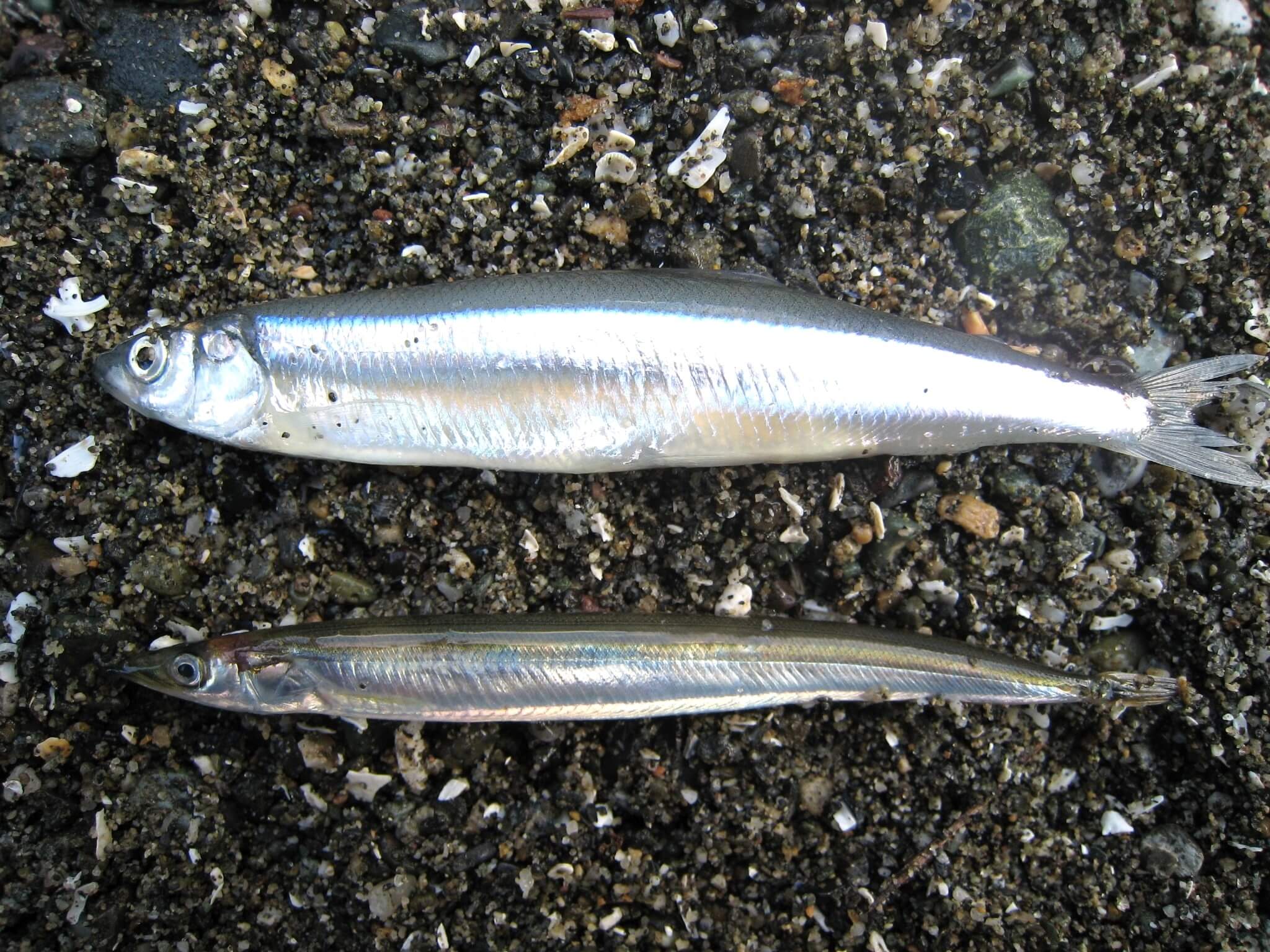Surf Smelt Sampling Has Arrived
A sediment card for identifying dominate sediment (Photo: WWF Canada and MABRRI)
Team Quadra Vortexing on Rebbecca Spit by M Douglas 2021
Surf smelt are forage fish, small schooling fish that help feed the marine food web. Surf smelt, along with Pacific sand lance, spawn on beaches and we know little about the locations or timing of these spawning events. Project Watershed has been surveying beaches for the presence of forage fish since 2019.
The primary spawning time for surf smelt is during the summer months, however they do spawn year round. Generally, these fish utilize the upper portions of the beach closer to the high tide line, whereas, Pacific sand lance are usually found below the high tide line.
Citizen scientists (volunteers) sample for surf smelt about every three weeks from May to September. The tides and moons play an important role in planning when sampling will occur as they play a role in when spawning occurs.
Surf smelt eggs are 1.0 – 1.2 mm in diameter, slightly larger and rounder than Pacific Sand Lance. They have a single sand grain attachment and are translucent. Pages 10 and 11 of the Citizen Science Manual have good images and descriptions of surf smelt eggs. With the summer heat, there is a potential of higher egg mortality for surf smelt during the heat of the day. Overhanging vegetation and beach wrack are important features that can help keep the eggs cool.
If you would like to help look for surf smelt eggs please contact Virginia East for more information.
We are always looking for local knowledge of where forage fish have been seen spawning. Use the link below to share any information you may have.
Related Posts
Gwen Janz
Meet our new Forage Fish Lead Biologist!
Eelgrass Update
In the fall our restoration team surveyed the three eelgrass beds which were planted with the help of our volunteers back in June. The beds are looking healthy!
Kus-kus-sum: End of Season Wrap-up
Now that we have put the Kus-kus-sum site to bed for the winter, we wanted to give you all a little update on how things progressed this season – lots happened!
Kate McKeown
Meet our new Forage Fish Technician!
Greenshores at Dyke Road Park – Reimagining a Park
On September 20 and 21, over 20 people were on site to help with planting at the Comox Valley Regional District’s (CVRD) Dyke Road Park redevelopment project.
Gartley Beach Green Shores for Homes Project
Project Watershed is teaming up with the CVRD and the Stewardship Centre for BC to do some shoreline restoration at Gartley Beach in Royston.



